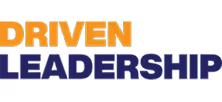Leadership Courses in Tacoma, WA


Leadership Training Leadership Courses in Tacoma, WA
Tacoma-area organizations face unique leadership challenges: distributed work across the I-5 corridor, a mix of industrial and service sectors, and the Pacific Northwest’s hybrid work norms shaped by weather and commuting patterns. Effective leadership training in Tacoma, WA helps managers, executives, and high performers build practical skills that improve team execution, retention, and measurable business results. The leadership courses below explain levels, learning objectives, delivery methods, target audiences, measurable outcomes, sample curricula, scheduling formats, and how custom programs are developed for Tacoma organizations.
Why Tacoma leaders need focused leadership training
Local employers—from logistics at the Port of Tacoma to healthcare systems and university athletics—report consistent pressure to retain talent, align dispersed teams, and accelerate leadership bench strength. Rainy-season remote work, multi-shift industrial crews, and community-focused cultures make experiential, practical training essential. Leadership courses designed for Tacoma emphasize real-world application, team execution, and measurable behavior change rather than theory alone.
Course levels and core learning objectives
- Introductory (Emerging Leaders)
- Objective: Build self-awareness, communication fundamentals, and basic people management skills.
- Outcomes: Clearer expectations, better one-on-one conversations, basic conflict resolution.
- Intermediate (Managers and High Performers)
- Objective: Drive team performance, improve coaching skills, and manage up and across functions.
- Outcomes: Improved delegation, stronger feedback cycles, better cross-functional collaboration.
- Advanced (Senior Leaders and Executives)
- Objective: Strategic leadership, culture shaping, crisis decision making, and change leadership.
- Outcomes: Stronger strategic alignment, improved executive presence, measurable impact on organizational KPIs.
- Specialty Tracks (Industry or role-specific)
- Examples: Unionized workforce leadership, frontline supervisor development, athlete/coach leadership for university sports programs.
Delivery methods: designed for Tacoma’s work patterns
- In-person workshops
- Multi-day immersive sessions that use experiential exercises and live facilitation; ideal for teams that benefit from face-to-face teamwork and role-play.
- Summit Online Academy / Online cohorts
- Modular, cohort-based digital learning that blends short synchronous sessions with asynchronous assignments—works well for dispersed Tacoma teams and seasonal schedules.
- Blended programs
- Combines on-site workshops (The Forge-style team execution sessions) with online reinforcement to sustain behavior change across months.
- On-site organizational development
- Custom facilitation embedded in workplace routines to address specific team challenges and systems.
Target audiences and common leadership issues in Tacoma workplaces
- Frontline supervisors: Need to reduce turnover, manage shift handoffs, and improve safety and compliance behaviors.
- Mid-level managers: Require coaching skills, performance management confidence, and cross-department influence.
- Senior leaders and executives: Focus on strategy, culture alignment, and leading through disruption (supply-chain shocks, labor negotiations).
- High performers and succession pools: Develop mindset, resilience, and systems thinking to prepare for promotion.
Common leadership problems seen locally include inconsistent feedback practices, unclear role accountability across remote and in-person teams, difficulty aligning teams around operational priorities, and retention challenges tied to engagement and culture.
Diagnostic process and program customization
Programs begin with a targeted needs assessment that aligns leadership development to business outcomes. Typical diagnostic steps:
- Stakeholder interviews and leadership intake
- Review of performance metrics, engagement survey data, and role competencies
- Team observations or shadowing (when appropriate)
- Gap analysis and recommended curriculum mapped to measurable goals
Custom programs tailor content, delivery cadence, and experiential activities to Tacoma-specific constraints—shift schedules, multi-site operations, or athletic-season calendars—so learning is immediately applicable.
Sample curricula and learning modules
Introductory module examples:
- Foundations of leadership: roles, responsibility, and expectations
- Effective one-on-ones and feedback loops
- Practical conflict resolution for frontline teams
Intermediate module examples:
- Coaching for performance: coaching models, live practice, and peer coaching labs
- Prioritization and alignment: building focused team plans and metrics
- Leading hybrid teams: communication rituals and remote meeting best practices
Advanced module examples:
- Strategic influence and cross-functional leadership
- Culture design and change management
- High-stakes decision making and crisis leadership simulations
Each module emphasizes practice, real-time feedback, and an action plan participants take back to their teams.
Measurable outcomes and evaluation
Leadership courses are designed with measurable outcomes linked to business metrics. Typical measures include:
- Pre/post leadership competency assessments (e.g., 360 feedback improvements)
- Changes in employee engagement or satisfaction scores
- Retention and turnover improvements in targeted cohorts
- Productivity indicators tied to team KPIs (project delivery times, throughput, error rates)
- Behavioral measures such as frequency of one-on-one coaching conversations or quality of performance conversations
Programs include a measurement plan: baseline data collection, interim check-ins, and follow-up assessment to quantify impact and iterate on development.
Scheduling formats and practical considerations for Tacoma organizations
- Short intensive workshops (1–3 days): Good for leadership retreats and concentrated skill-building.
- Multi-session cohorts (6–12 weeks): Best for sustained skill adoption with practice and accountability.
- Ongoing leadership academies: Quarterly modules for succession planning and continuous development.
- Flexible scheduling: Sessions scheduled around shift operations, athletics seasons, and regional commuting patterns to maximize attendance.
Local logistics (venue selection, hybrid tech for remote participants, and travel considerations between Tacoma, Seattle, and JBLM area) are built into program plans to minimize disruption and maximize participation.
Long-term benefits and maintenance
Sustained investment in leadership courses produces measurable cultural and operational benefits: clearer accountability, better team execution, improved engagement and retention, and stronger bench strength for promotions. Maintenance strategies include leader coaching, peer accountability groups, refresher modules through online academies, and integrated performance-support tools to reinforce new habits.
SummaryLeadership Training Leadership Courses in Tacoma, WA combine practical, experiential learning with measurable business outcomes. Whether you need foundational management skills for frontline supervisors, coaching and execution training for mid-level managers, or advanced strategic development for executives, Tacoma-focused programs align learning with local constraints and organizational goals through diagnostics, customized curricula, blended delivery, and a clear measurement plan.

